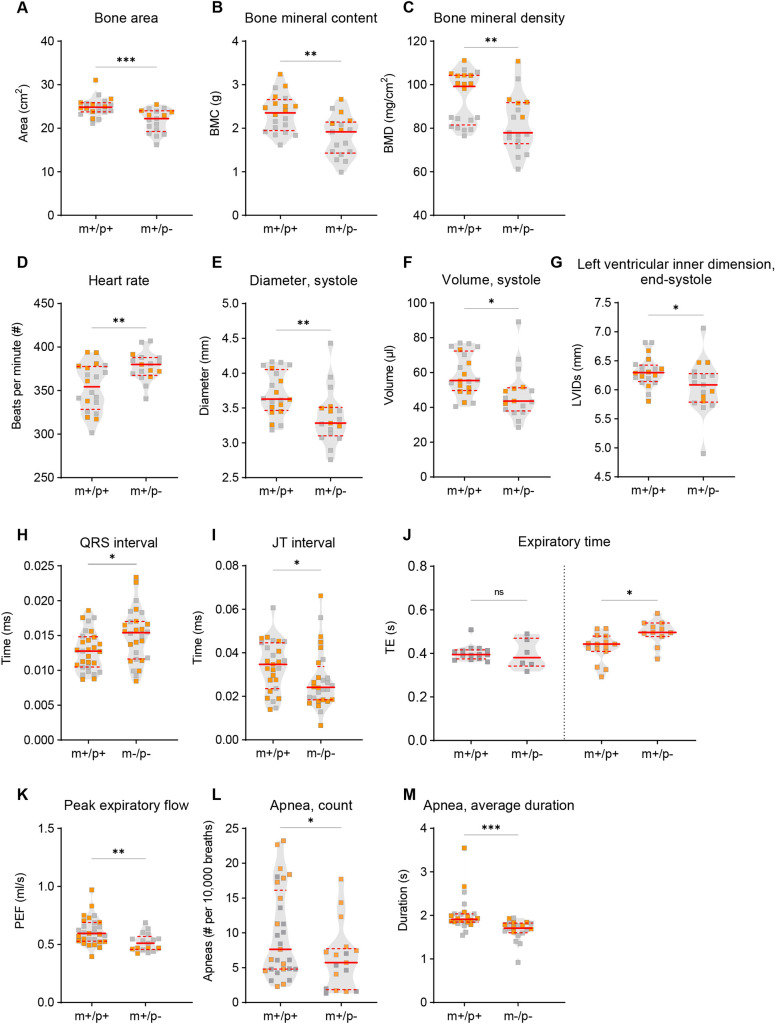Fig. 6.
Skeletal, cardiac and respiratory phenotypes in Magel2 mutant rats. (A-C) DEXA scans showed that Magel2m+/p− (m+/p−) rats, compared to their respective wild-type littermates (m+/p+), had a significant decrease in bone area (A), bone mineral content (BMC; B) and bone mineral density (BMD; C). (D-G) Cardiac morphology by echocardiogram analysis revealed a significant increase in heart rate (D), and decrease in ventricular diameter (E) and volume (F) during systole in m+/p− rats compared to m+/p+ littermate controls. End-systole left ventricular inner dimension during systole (LVIDs) was also reduced in m+/p− rats compared to m+/p+ littermate controls (G). (H,I) Magel2m−/p− (m−/p−) rats, compared to their respective wild-type littermates (m+/p+), showed altered cardiac electrical activity measured by electrocardiography; a significant increase in QRS interval (H) and decreased JT interval (I) was observed in m−/p− rats. (J-M) In unrestrained whole-body plethysmography, both m+/p− and m−/p− rats showed alterations in various breathing-related parameters. Although expiratory time (TE) was increased in female, but not male, m+/p− rats (J), genotype differences as a group were observed for peak expiratory flow (PEF; K). Decreased apnea count was observed in m+/p− rats (L); in contrast, the average duration of apneas was decreased in m−/p− rats (M). Violin plots were used to indicate data density and distribution, with gray (males) and orange (females) squares within each genotype/group category; solid red lines indicate the median and dashed red lines indicate quartiles. *P<0.05; **P<0.01; ***P<0.01; ns, not significant; multivariate two-way ANOVA using genotype and sex as main effects followed by post-hoc analyses were conducted when appropriate. A statistical summary of physiology data is provided in Table S2.

